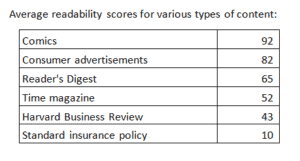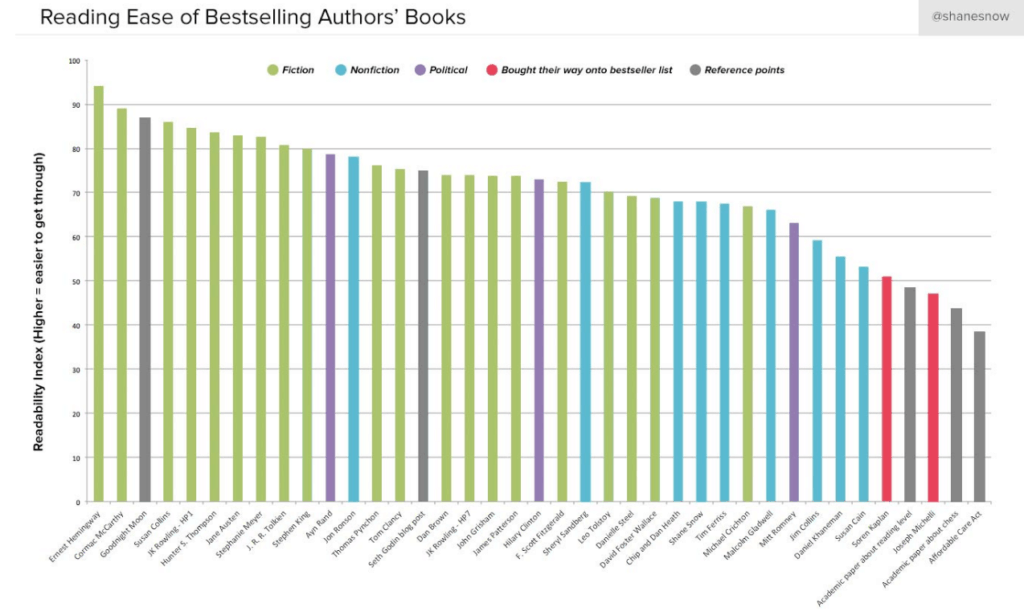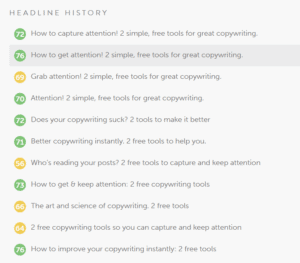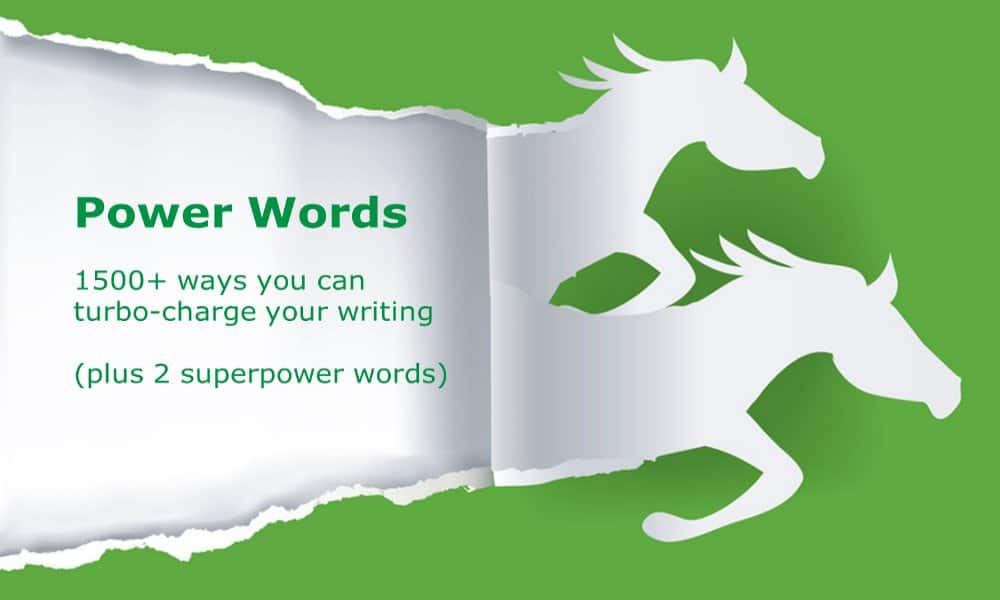Why does copywriting matter?
Copywriting is right at the heart of marketing.
Whether you’re writing web pages, whether you’re writing emails, whether you’re writing a brochure, you’re writing copy. And you need to make it good, so it will attract interest. That’s the art of copywriting.
Of course, images and video are important too. For some businesses, they’re really important. Artists. Hairdressers. Event organisers. Builders and architects. But even for these service types, copy still matters. Do you take commissions? What kind of hair does this style suit? How long do you need to plan an event? What kind of projects do you build or design for?
Images attract. Copy gives you a chance to say more.
Today, I’m looking at two tools that can help you improve the quality of your copywriting. (No, they’re not a pencil and a sharpener!)
They’re both available on-line and they’re both free. What more could you ask for?
1. Readability Analysis Tool.
When you’re trying to market or sell to people, you want to make everything easy. That includes your copy.
I’m sure you all agree that Reader’s Digest is easier going than the Harvard Business Review. What you may not know is there there are a range of formulas to analyse any piece of writing and give it a ‘readability score’. They all work by analysing the average number of words per sentence, syllables per word, use of the passive voice and so on.
Here’s a truly handy page from Webpage FX which will analyse your writing using all the major readability indices. I have it bookmarked in my web browser, so it’s always there when I need it.
The most commonly used readability measure is the Flesch-Kincaid Reading Ease score. The higher the score, the easier the text is to read.
 So “The cat sat on the mat.” scores 116, but “The feline positioned its posterior on the carpet.” has a score of only 40.
So “The cat sat on the mat.” scores 116, but “The feline positioned its posterior on the carpet.” has a score of only 40.
This table shows the average Flesch-Kincaid Reading Ease scores of a range of reading material.
How does your current marketing copy compare?
What score should you be aiming for?
The rule of thumb for web writing is, you want a Fleisch-Kincaid of 60 or above.
That’s a great place to start.
But there may also be variation from industry to industry. (Try writing about meridians in acupuncture for holistic health. All those syllables…) So you could also look at your competitors’ sites. Take some of their copy. Run it through the readability calculator and see what you get. You certainly don’t want to be harder to understand than your competition are!
Don’t limit your readability testing to online, either. Wherever and however you market and promote, you want to reach people. Don’t make them work hard to understand your message!
Remember, readability does not mean dumbing down! Ernest Hemingway has a Reading Ease of well over 90. Jane Austen, Tolkien, even Tolstoy score 70 or more. The ideas may be complex, the language shouldn’t be.

While the Flesch-Kincaid Reading Ease is the most popular score, it’s not the only one in use. There’s also a Flesch-Kincaid ‘Grade Level’ – roughly, the number of years of full-time education required to read and understand the text. And a number of completely separate indices, including my favourite – the Simple Measure Of Gobbledygook, or SMOG index.
The great thing is, all those tests are there on one single page. A good goal is to get every single test showing yellow or green. Then you’ll know your writing is accessible to most people.
A sad copywriting story from my past
Long, long ago, before I knew about reading ages, I put together some brochures for a logistics company. I spent ages on copy, outlining all the things we did well.
Then just after the brochures were approved and printed, I learned about readability tests. And I discovered that our brand new brochures required an average of 17 years of full time education to understand. Oops! That’s a bit embarrassing when your target market is transport managers, half of whom left school at 18!
Another readability tip for WordPress Users
If you’re writing blogs within WordPress and if you write them actually within WordPress itself, consider installing the Yoast SEO plugin. Quite apart from its SEO features, you will get a Flesch-Kincaid calculator directly within the plugin.
[update October 2019 – there have been changes to how Yoast calculates readability and awards the ‘green bullet’ over this year. I’m not a fan. Use it to check your Flesch-Kincaid readability score, but don’t overstress about getting a green Yoast score. Some things it criticises – like 3 consecutive sentences starting with the same word – can actually be really effective.]
But still use the readability page to test against other indices and for copy which is not within your WordPress site. That could be your email newsletters, your nurture program, brochure copy or the case study that you’re about to send to a client for approval.
But there’s more to good copywriting than just readability.
“To make an impact, your writing has to be interesting, too.”
That’s from Shane Snow, the Contently writer who calculated reading ease scores for all those famous authors. He’s right. You need to grab attention and keep it.
2. Getting Attention – The Power of a Good Headline
So how do you get your audience interested? That brings me onto the second tool of the day.
 The Co-Schedule Headline Analyzer will give you a score for your headline or subject line.
The Co-Schedule Headline Analyzer will give you a score for your headline or subject line.
Like the Readability page, it’s completely free, although nowadays they do ask for an email address.
UPDATE JULY 2021: The bad news is, the Coschedule Headline Analyzer is no longer free for any meaningful amount of headline analysis. The good news is, there are a range of alternatives which are still free. You can find a review of the most popular headline analysers here.
How important are headlines?
It’s often said that 80% of people read the headline and only 20% read the article. I haven’t been able to find any research to support this, although apparently David Ogilvy states, as far back as 1963,
‘On the average, five times as many people read the headline as read the body copy. When you have written your headline, you have spent eighty cents out of your dollar.‘
There is, however, solid research behind the Forbes report that 59% percent of all links shared on social networks (Twitter, anyway) come without the article being read at all.
“People are more willing to share an article than read it.”
So if all they see is the headline, that headline matters!
And that’s why so many copywriters suggest you invest your time and effort in the headline. Many advise writing 10 or even 20 different headlines before picking the one to go with. The idea is that you have to write so many you get past the obvious – and then inspiration strikes!
How does the Analyzer work?
Once again, it uses a formula, although this one’s a bit different.
It analyses:
- Type of headline. Lists, how-to headlines and questions are seen as more effective than a generic headline
- Headline length
- The words you use. The ideal headline uses emotional words and power words to draw the user in. It also includes a good balance of common and uncommon words – uncommon words make it stand out, but too many would make it simply bizarre!
Simply type your headline in, press enter and check your score.
One great feature of this headline analyzer is that you can see the history of your headlines. So if you make a tweak and your headline gets worse, you can easily go back. Or you can try and compare multiple really different headlines without having to write them all somewhere else for reference.
What should you use it for?
- Blog posts
- Email subject lines
- Social Media headlines
- Copy on social media or blog post images.
A word about headline length
The tool assumes you are writing a headline or subject line for a blog. So it targets a length of 55 characters.
If you’re writing for social media, you might want to target a different length. Kevan Lee of Buffer recommends the following:
- Twitter: 71–100 characters
- Facebook: 40 characters
- LinkedIn: 16-25 words for B2B.
For email subject lines, he suggests 28-39 characters.
Use the tool, but don’t let the tool use you!
It’s not just headline length, as discussed above. You have to remember that the tool knows nothing about your audience or why you are writing. Take common and uncommon words, for example. Who knows what’s usual for your audience? You or the tool?
In the end, you have to make a value judgement and you have to go with what you think is right. The Headline Analyser can’t decide for you. But it can give you some insights and get your creative juices flowing.
So that’s today’s post. Two great tools to help you with your copywiting. Why not give them a go?
Of course, if you really hate writing and never want to do any at all, you might need an external copywriter. In which case, just get in touch. We’ll be happy to help.






